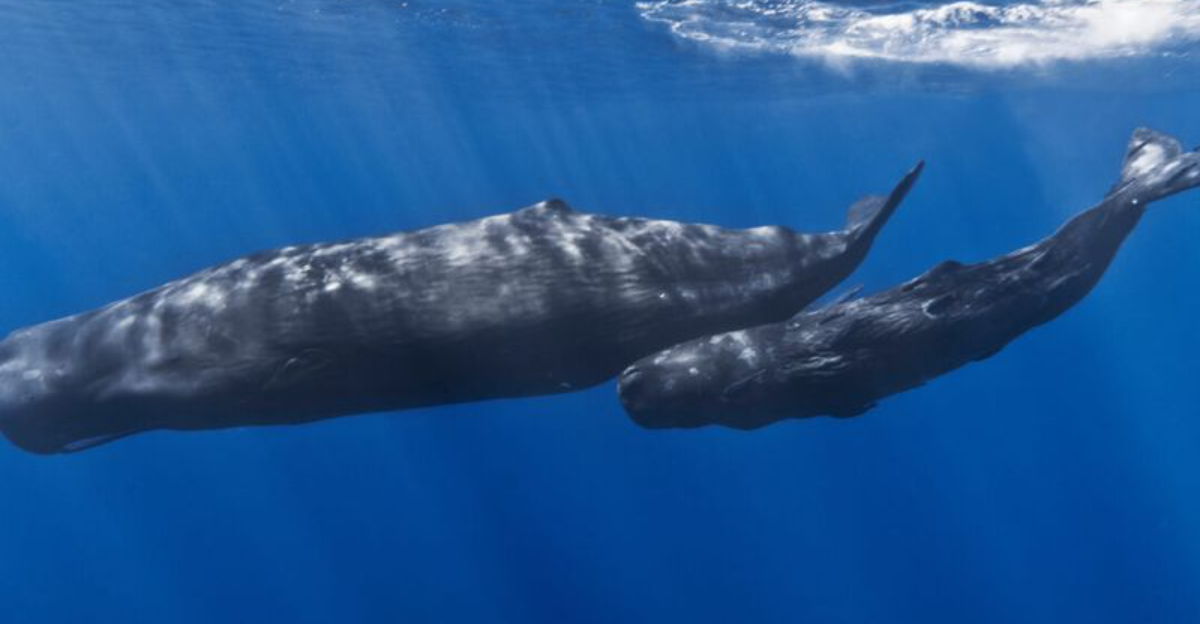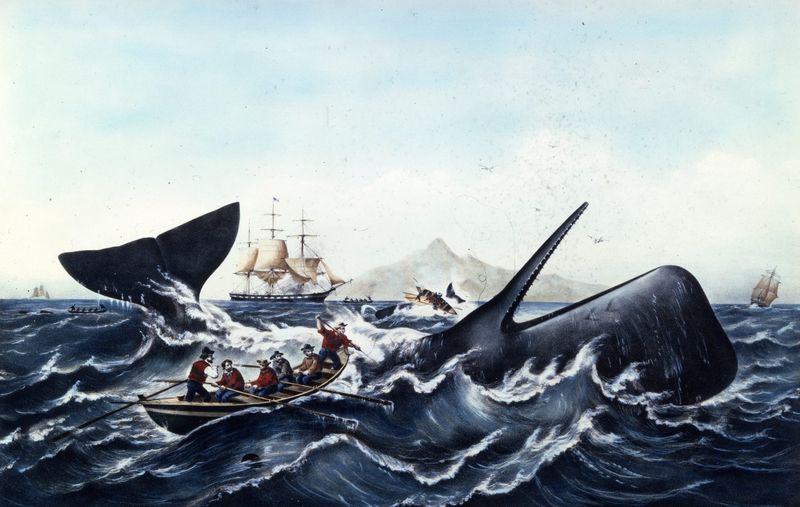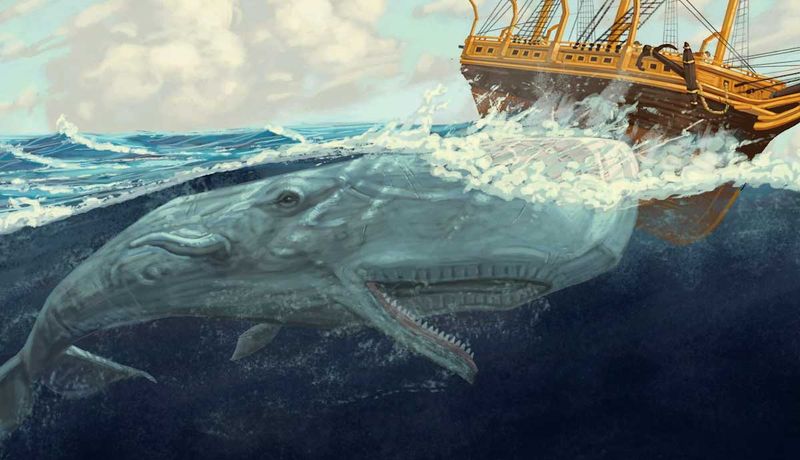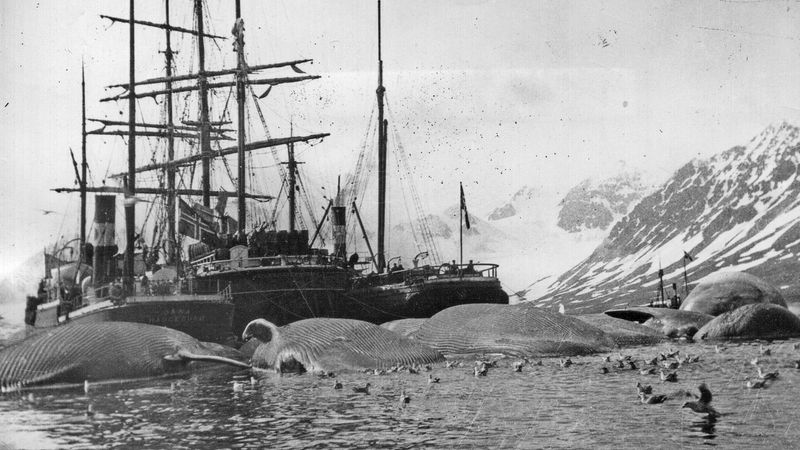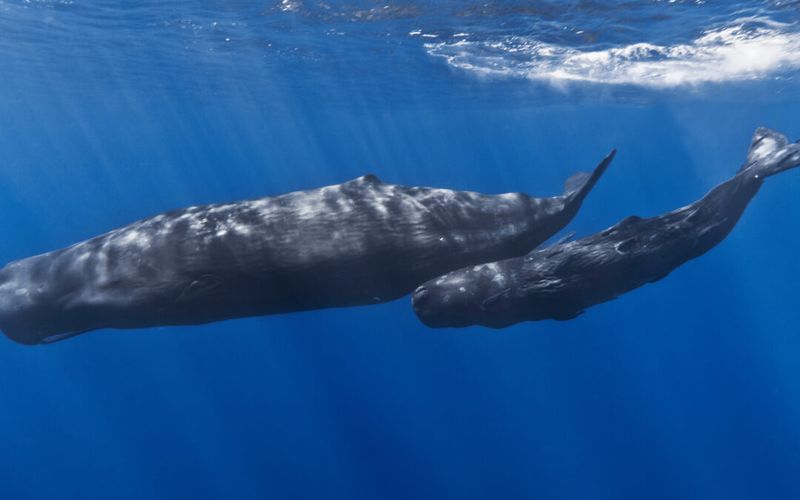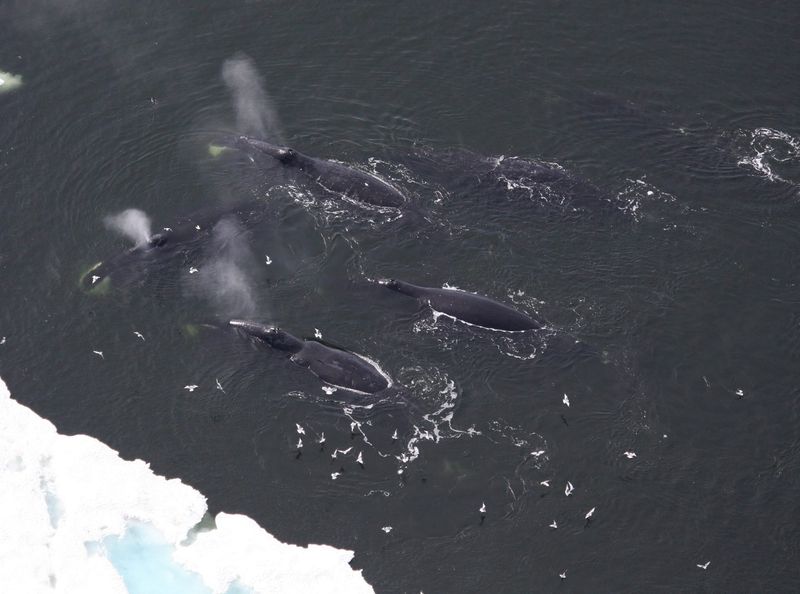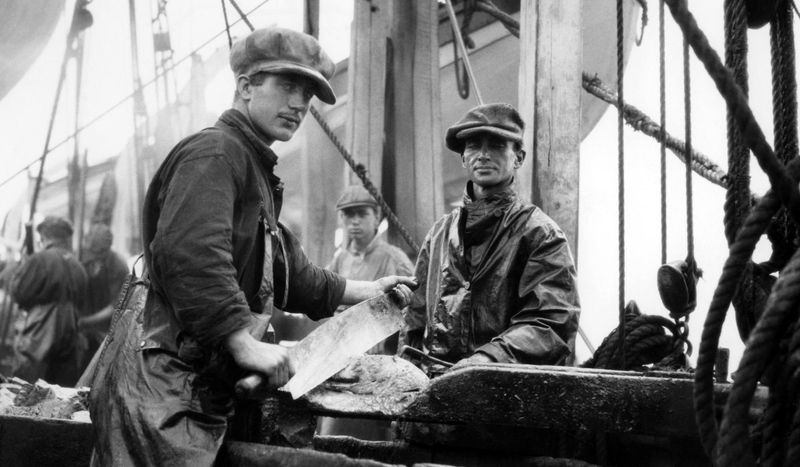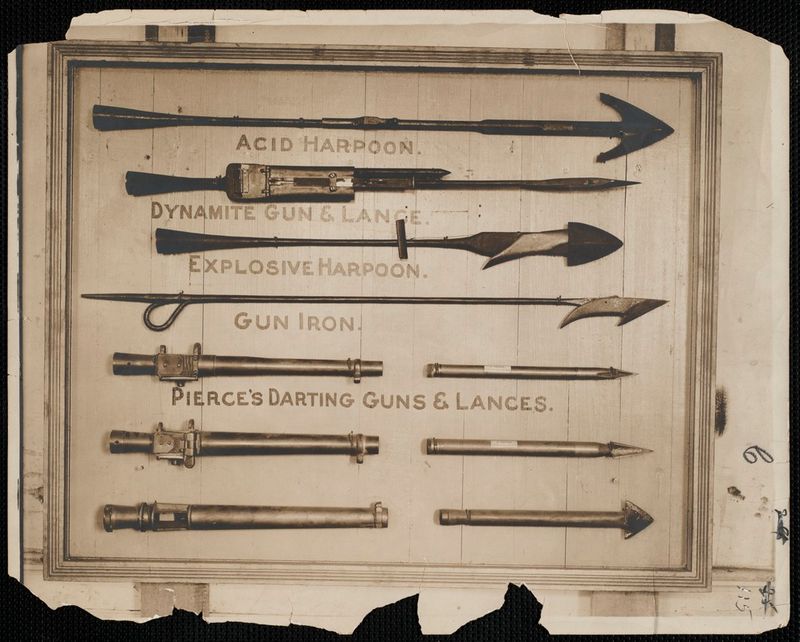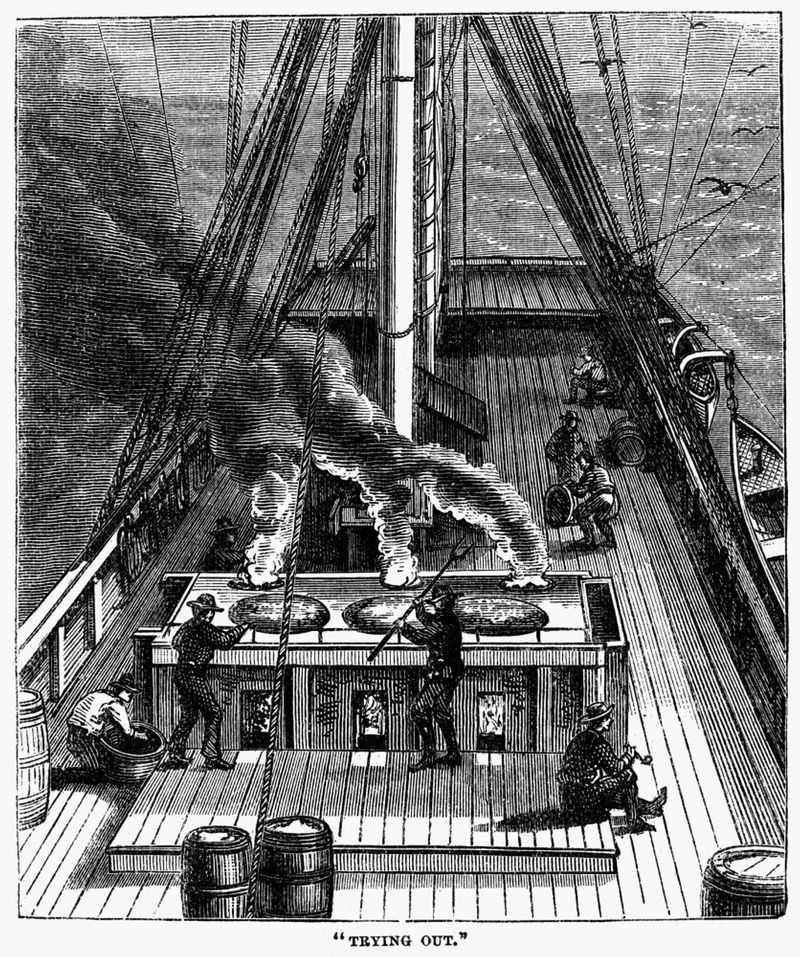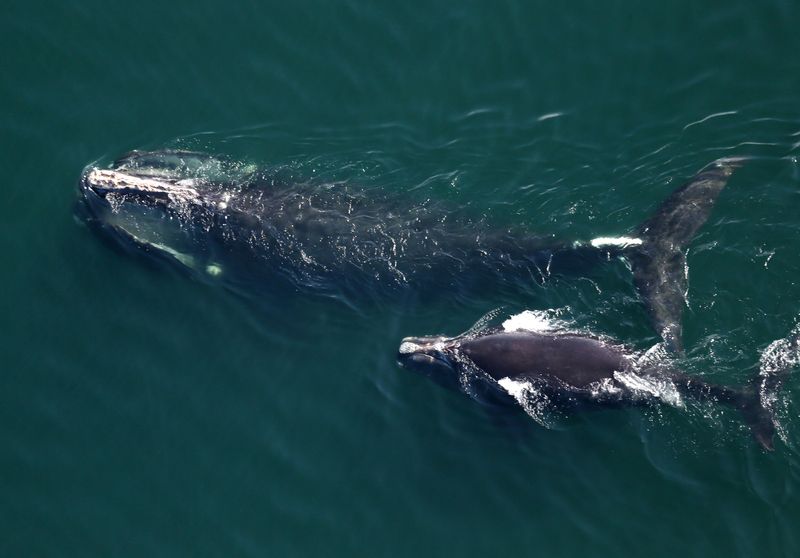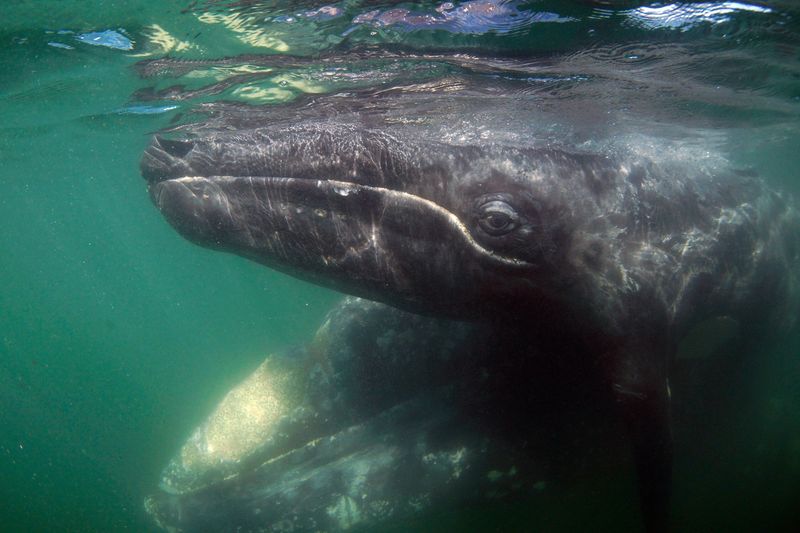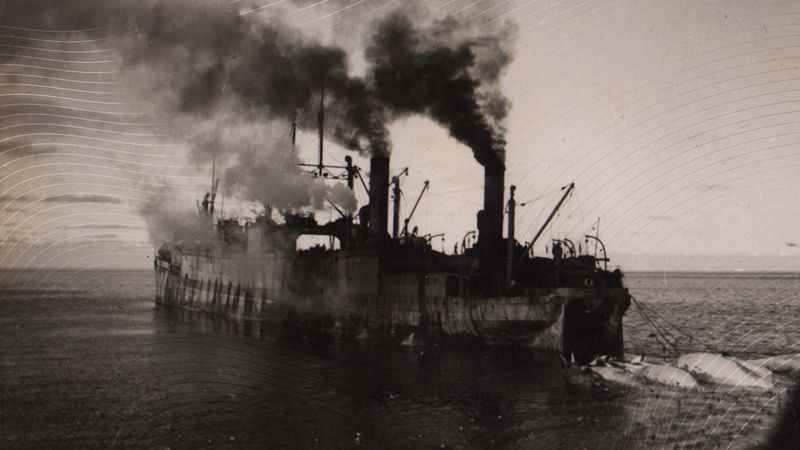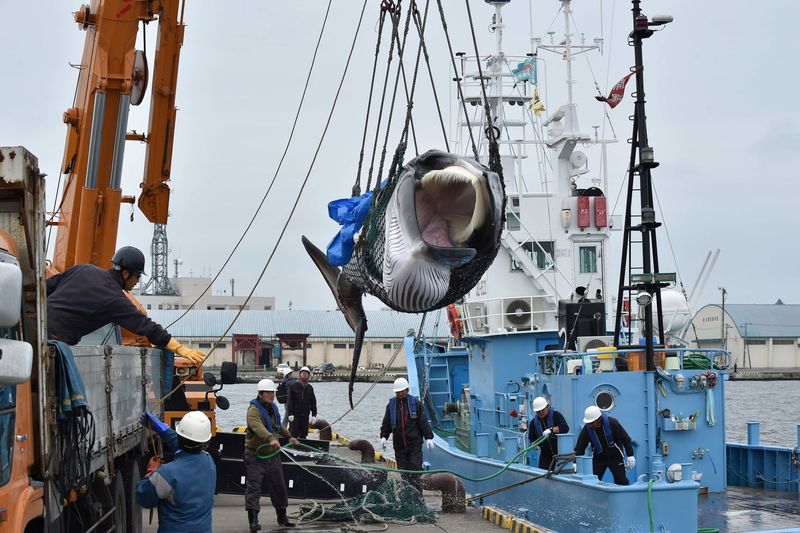Whaling was an industry fraught with unimaginable cruelty and destruction. The pursuit of whales for their oil and other valuable resources led to the decimation of whale populations and inflicted unimaginable suffering on these intelligent creatures. This blog post delves into twelve brutal facts that illuminate the dark legacy of one of the worst industries in human history. Each item unveils a different facet of this grim narrative, providing a comprehensive understanding of the impact and horror of whaling.
1. Whales Were Butchered Alive & Conscious for Hours
Harpoons rarely resulted in a swift death; instead, whales suffered prolonged agony, dragging ships for miles. Harpoons like “The Darting Gun” exploded inside whales, causing internal ruptures without instant death. This brutal method epitomized whaling cruelty. Despite the technology, whales often took 6-12 hours to die, their cries echoing across the ocean. The inhumanity of this practice cannot be overstated, making it one of the most barbaric aspects of whaling history.
2. Sperm Whales Fought Back—Inspiring Moby-Dick
In 1820, the whaling ship Essex met its demise at the hands of a vengeful sperm whale, a real-life inspiration for Herman Melville’s “Moby-Dick.” This wasn’t an isolated incident; sperm whales sometimes rammed vessels, causing chaos and destruction. Their remarkable intelligence allowed them to retaliate against their attackers, turning the tables in an epic struggle. For the sailors of the Essex, their ordeal led to desperation and cannibalism, a grim testament to the perils of confronting nature. These encounters reveal the unintended consequences of human greed.
3. Whale Oil Fueled the Industrial Revolution—At a Genocidal Cost
Whale oil was indispensable during the Industrial Revolution, lighting homes and lubricating machinery. However, this progress came at a genocidal cost to whale populations. By 1850, the right whale was on the brink of extinction, with only a few hundred remaining. The demand for oil led to relentless hunting, pushing many species to near extinction. This dependence on whale oil illustrates how industrial advancements often ignored environmental and ethical considerations, leaving a legacy of ecological devastation. The relentless pursuit of profit overshadowed the value of life.
4. Whalers Targeted Babies First (They Were Easier to Kill)
Whalers employed heartless tactics, targeting calves first, knowing they couldn’t dive deep to escape. This cruel strategy lured protective mothers to the surface, sealing their fate. Entire whale families were decimated, disrupting the social structure crucial for survival. This merciless approach underscores the industry’s complete disregard for animal welfare. The systematic annihilation of whale pods paints a grim picture of the lengths to which humans went for profit. Such practices reflect a dark chapter in human history, marked by exploitation and lack of empathy.
5. The Arctic Bowhead Whale Massacre
Bowhead whales, with their thick blubber, were prime targets, deemed “oil barrels with fins.” By 1925, 99% had been slaughtered, reducing their numbers from around 50,000 to a mere 3,000. This massacre in the Arctic highlights the voracious appetite of whalers for profit, with little regard for conservation. The decimation of bowhead populations underscores the unsustainable practices that drove species to the brink. It serves as a stark reminder of the environmental recklessness fueled by greed, leaving ecosystems shattered and species vanishing.
6. Whalers Used Slave & Child Labor
Whaling ships were notorious for their exploitation of vulnerable individuals. Boys as young as 12, known as “greenhands,” were coerced into signing lengthy contracts under false pretenses. These child laborers endured brutal conditions, with no pay and scarce, rotten food. Discipline was meted out through floggings, adding to their misery. This exploitation was not limited to children; slave labor was also utilized, highlighting the industry’s disregard for human rights. Such practices laid bare the dark underbelly of the whaling industry, thriving on exploitation and suffering.
7. Explosive Harpoons Made It Even More Gruesome (1860s Onward)
The introduction of explosive harpoons, known as “bomb lances,” in the 1860s marked a new level of brutality in whaling. These harpoons exploded within the whale, causing massive internal damage but seldom killing the creature quickly. The gruesome nature of this technique reflects the industry’s evolution towards efficiency at the expense of humane practices. The violent method left whales suffering unbearable pain, symbolizing the callousness of the era. The relentless pursuit of profit led to technological “advancements” that only amplified the cruelty of whaling.
8. Whaling Ships Smelled Like Rotting Death
The stench aboard whaling ships was notorious, a nauseating blend of boiling blubber and decay. “Trying out,” or processing blubber on deck, enveloped ships in a suffocating miasma. The overpowering smell drove some sailors to madness, illustrating the extreme conditions they endured. Living amid this constant odor highlighted the harsh realities of life at sea. This sensory assault was part and parcel of the whaling industry, adding another layer to its infamy. The unbearable conditions aboard these ships underscored the high human cost of whaling pursuits.
9. Whale Populations Still Haven’t Recovered
Despite decades of conservation efforts, whale populations have struggled to rebound. Blue whales, once numbering 350,000, are now reduced to 10,000-25,000, a mere fraction of their original numbers. The North Atlantic right whale fares even worse, with fewer than 350 individuals remaining, making them critically endangered. This struggle highlights the long-lasting impact of past hunting practices. The slow recovery serves as a poignant reminder of the fragility of marine ecosystems and the enduring consequences of historical exploitation.
10. Whalers Drove Some Species to Extinction
The relentless pursuit of whales led to the extinction of the Atlantic gray whale by the 1700s. Known as the “Walking Dead” effect, even after bans were implemented, some species remain too few to recover. This grim legacy underscores the irreversible damage inflicted by whaling. The loss of species serves as a stark reminder of humanity’s capacity to alter ecosystems permanently. It is a testament to the profound impact of unchecked exploitation, leaving behind a void that can never be filled. The extinction narrative resonates as a cautionary tale for future generations.
11. Factory Whaling (1900s) Was Even Worse
The advent of factory whaling in the 1900s brought mass slaughter to the oceans. Equipped with explosive harpoons and processing capabilities, these ships could handle 100 whales a day. By 1960, 1.5 million whales had been killed in the 20th century alone. This industrialized approach epitomized efficiency over ethics, exacerbating the decline of whale populations. The mechanization of whaling highlighted the scale of human impact on marine life, pushing species to the brink. Factory whaling represents a dark period of industrial overreach and environmental devastation.
12. Modern Whaling (Japan, Norway, Iceland) Still Happens
Despite international bans, modern whaling persists under the guise of “scientific research.” In 2020, Japan killed 333 minke whales, citing research purposes. Meanwhile, Iceland and Norway continue to hunt endangered fin whales, with little market demand for their meat. This ongoing practice highlights the loopholes and cultural factors that allow whaling to persist. The continuation of this practice is a contemporary echo of past excesses, reflecting challenges in global conservation efforts. It underscores the need for vigilance and international cooperation to safeguard marine life.
